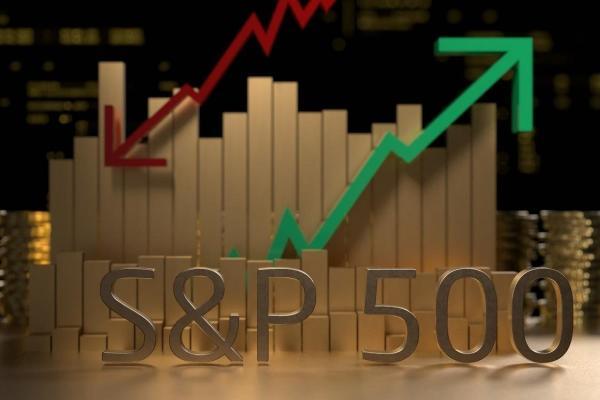What Is S&P 500 (Standard & Poor's 500 Index)
The S&P500 is arguably the most important stock index in the world. It is made up of 500 companies, including many of the largest companies in the world.
The index is widely followed and is used as a reference for the most liquid exchange traded funds and derivatives in the world.
S&P 500 definition
The S&P500 index is an index of 500 of the most valuable listed companies in America. The index is market cap weighted and includes the 500 most valuable companies that are profitable and headquartered and publicly listed in the USA.
History of the S&P 500
The index that later became the S&P500 was originally launched in 1923 by the Standard Statistics company. At that point the index included 90 companies in 26 industries. The index in its present form was introduced in 1957 and the number of companies was increased to 500.
Some of the biggest financial product innovations of the last 50 years have been based on the index. In 1976, the world’s first index fund was launched, and designed to track the performance of the S&P500. In 1982 the first index futures contract, which is also based on the S&P500 in index was launched. In 1993, the world’s first exchange traded fund, which also tracks the index, was launched.
As of 2018, the index covered 83% of the market value of all US based listed companies. Another 2,500 companies account for most of the remaining 17% of market value of US listed companies.

How the S&P 500 in calculated
The index is weighted according to the market capitalization of each company. The following steps are used to calculate the weight of each component:
- Calculate the market cap (capitalization) of each company by multiplying the number of outstanding free float shares by the share price.
- Add up the market caps of all 500 companies.
- Divide the market cap of each company by the total market cap of all 500 companies.
To calculate the index value, each company’s market cap is multiplied by its weight, and then the weighted values are added together. The total is then divided by a base year value and multiplied by 100.
How Does S&P 500 Work?
The index is managed by the U.S. Index Committee at S&P Dow Jones Indices. The committee meets monthly to evaluate the current constituent companies and any changes that may be made.
For a company to be eligible for inclusion, certain criteria besides the company’s market value must be met. A company’s stock must be highly liquid and have a public free float of at least 50% of the outstanding shares. The company earnings for the last quarter and for the previous 12 months must be positive too.
The index is rebalanced quarterly. Companies that qualify for inclusion are then added to the index, while companies that no longer qualify are removed from the index.
An index is calculated using the prices of the securities in the index, so the index itself cannot be traded. However, a large number of financial products use the index as a reference price or track the index by holding the same securities in the same proportion as the index. These include derivatives like futures and options, and funds like index funds (mutual funds) and exchange traded funds.
S&P 500 Companies
As of 29 September 2020, the following were the 20 largest constituents of the index.
Company | Symbol | Industry | Weight |
AAPL | Consumer Electronics | 6.65% | |
MSFT | Software | 5.71% | |
AMZN | Internet Retail | 4.87% | |
FB | Internet | 2.22% | |
Alphabet Inc | GOOGL | Internet | 1.58% |
Alphabet Inc | GOOG | Internet | 1.55% |
Berkshire Hathaway Inc | BRK.B | Insurance | 1.52% |
JNJ | Drug Manufacturers | 1.39% | |
PG | Household and Personal | 1.24% | |
V | Credit Services | 1.22% | |
NVDA | Semiconductors | 1.16% | |
MA | Credit Services | 1.08% | |
HD | Home Improvements | 1.06% | |
JPM | Banks | 1.05% | |
UNH | Healthcare Plans | 1.04% | |
VZ | Communication Services | 0.88% | |
ADBE | Software | 0.84% | |
DIS | Communication Services | 0.82% | |
PayPal Holdings Inc | PYPL | Credit Services | 0.81% |
CRM | Software | 0.81% |
The 10 most valuable component companies account for 28% of the value of the index, and the 50 most valuable companies account for 55% of the index.
The leading sectors in the index are information technology, healthcare and communications which account for 26, 15 and 11% of the index respectively.

Pros and Cons of S&P 500 Index
Pros
- The S&P 500 index includes many of the most successful companies in the world. Silicon valley has produced 8 of the largest 10 technology companies in the world. These eight rapidly growing companies are all in the index.
- The index, and products based on it are the most liquid in the world. It is widely followed and used as a benchmark for funds and the performance of the stock market in general.
- Trading instruments like CFDs, futures and ETFs that are based on the index are amongst the cheapest and most liquid to trade.
Cons
- With so many companies in the index, it may be slow to respond t0 changes in the performance of certain sectors.
- Although the S&P500 index includes many of the largest companies in the world, some notable companies that are not headquartered in the US are excluded.
- The S&P500 is heavily influenced by large technology companies (Apple, Amazon, Microsoft etc.). If these companies underperform it will affect the index significantly. However, the effect will not be very visible as the index itself is the benchmark against which most investment are measured.
Why to trade with Libertex?
- access to a demo account free of charge
- technical assistance to the operator 5 days a week, 24 hours a day
- leverage up to 1:500
- operate on a platform for any device: Libertex and Metatrader 4 and 5
- no commissions for extractions in Latin America




